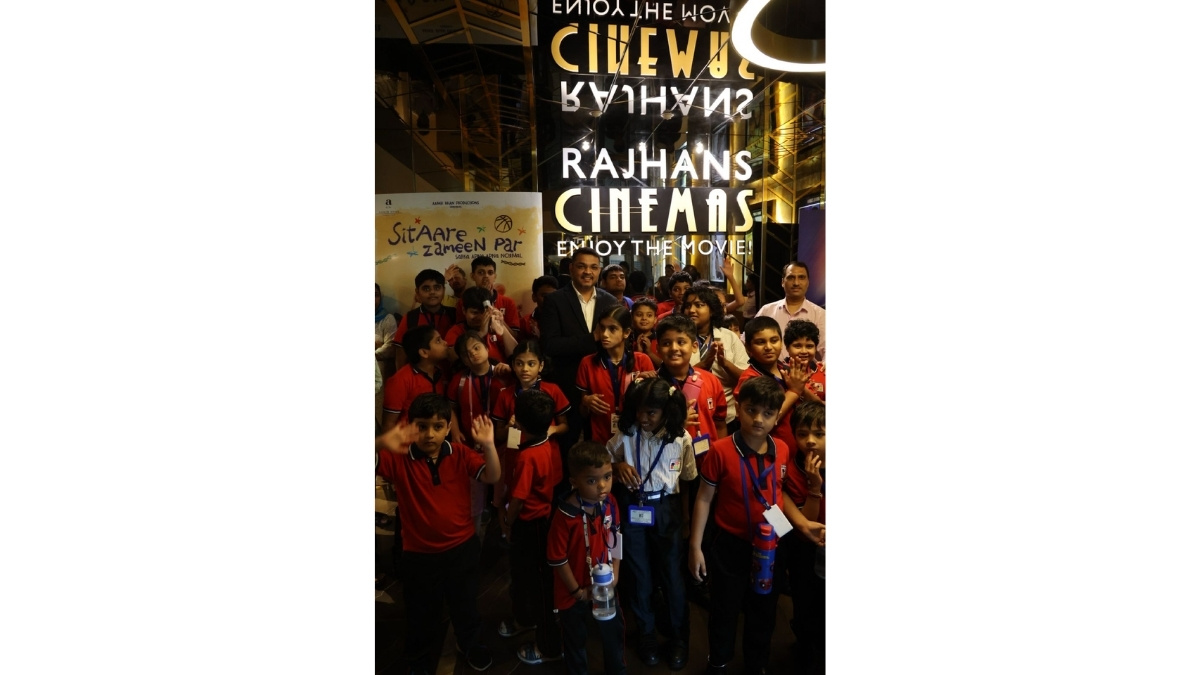Surat (Gujarat) [India], July 8: In a fitting celebration of empathy, inclusivity, and social interaction, Rajhans Cinemas organized an unforgettable experience in Surat on 7 July 2025, creating an inspiring benchmark for corporate social responsibility and inclusive entertainment. The “Inclusive Cinema Surat” program organized a special screening of Sitare Zameen Par for specially-abled kids of the city — something that goes beyond the normal business of cinema and upholds the position of entertainment as an effective tool for changing society.
The activity was conducted at Rajhans Cinemas, Vesu and Katargam branches, and attracted children from Anand Special School for Education and Training and Deep Special Educational Trust. These schools support a vast array of children with specific developmental and physical requirements. For them, this was not just a special chance to see cinema on the big screen but also to watch it in an atmosphere purposefully sensitive to their needs.
An Attentively Crafted Experience
From the very beginning, this was not a typical screening of a film. The event was carefully planned to place accessibility and emotional comfort first. Audio-visual environments were calibrated for sensory comfort, staff and volunteers were trained to respond with empathy, and arrangements were made according to inclusive design.
The payoff? An auditorium filled not only with kids, but with laughter, happiness, wonder, and the kind of silence that is a sign of profound emotional connection. The strong message of Sitare Zameen Par — a movie that fights for neurodivergence and empathy — spoke even louder in a room full of children who experience that reality every day.
“Cinema That Heals”: A Vision Beyond Screens
Jayesh Desai, Chairman of Rajhans Cinemas, distilled the event’s philosophy into one moving sentence:
“We believe cinema has the power to unite, heal, and inspire. This special screening is a small step toward creating inclusive experiences that bring smiles and joy to every heart.”
This view situates cinema not so much as a commodity to be consumed, but as a force of change — a site of exposure, compassion, and healing of the heart.
Why This Matters
In a nation where public infrastructure remains a challenge to inclusivity, particularly for the differently-abled, these kinds of efforts are not only virtuous — they are imperative. The entertainment industry does not usually consider the diverse requirements of audiences. Rajhans Cinemas’ accessible screening is not only a momentous occasion but perhaps a yardstick.
It poses the question: What if more entertainment conglomerates implemented such methods as the norm, instead of the exception?
Community Response: Gratitude and Hope
Parents, teachers, and caregivers mirrored their gratitude in one accord. Some mentioned how uncommon such acts are and how they provide children with special needs moments of relief, dignity, and happiness that are frequently out of reach within public life.
A teacher at Deep Special Educational Trust observed,
“This is the first time many of our children have been inside a cinema. Watching their eyes light up was overwhelming. Rajhans has not only given them a film, but a memory.”
These are not merely sentimental statements — they are affidavits of effect.
A New Benchmark in Social Responsibility
By doing this, Inclusive Cinema Surat has become a symbol of something greater than a screening. It is a call to action for the entertainment eco-system at large: think with empathy, act with intention. The gesture rebrands Rajhans Cinemas not only as a business, but as a conscience brand — one that knows profitability and purpose don’t have to be exclusive of each other.
This is not Rajhans Cinemas’ first foray into community outreach, but it’s arguably their most emotional one so far. With public institutions in continuous development, cooperation between civil society and the private sector — particularly through such emotionally charged mediums — is crucial.
Looking Forward
The expectation is that this is the start of something, not just a standalone action. If inclusive screenings become standard practice, the cultural narrative of film would shift — one where all are genuinely invited to the show.
As the last credits played, the cheering wasn’t merely for the movie. It was for a future built on inclusion, consciousness, and common humanity.

